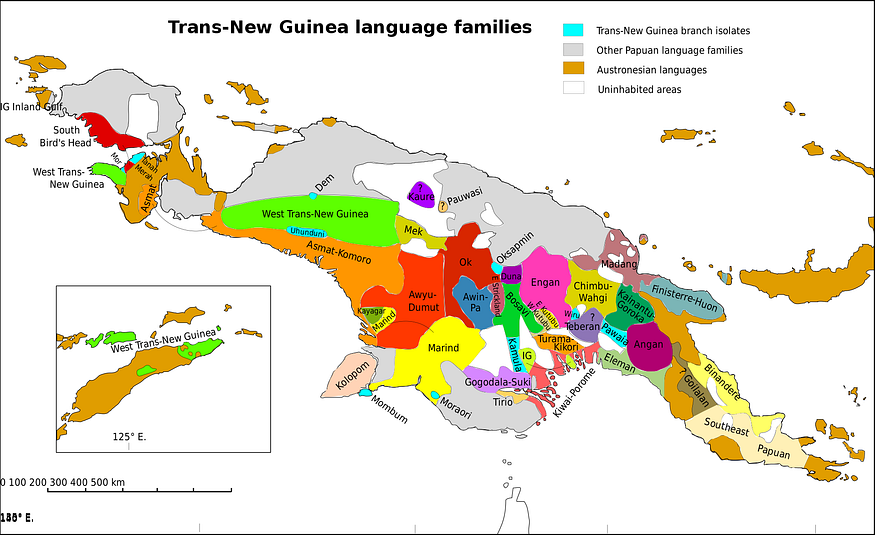Why Is Papua New Guinea the Most Linguistically Diverse Country in The World?
On the southern Pacific Sea, roughly the size of California, lies Papua New Guinea, home to 0.13% of the world’s population yet over 800 living languages are found in the country totaling nearly 12% of the world’s languages. But why does this moderately sized country boast so much linguistic diversity?
Linguistic Theories
Early theories suggested that the linguistic diversity of Papua New Guinea could be attributed to the vast and dense topography of the country.
The area comprises dense mountain ranges, swamps, and rivers that divide and isolate regions. It was assumed that trade and interaction between communities were challenging due to the topography, leading to the development of languages with minimal exchange or convergence.
However, later findings have challenged this notion as the principal reason for linguistic diversity. Linguist Donald Laycock remarked that the least linguistic diversity was found in the most isolated areas of Papua New Guinea (the Highlands), while the most diversity was found in areas with easy terrain and trade access.
These claims suggest that language was deeply intertwined with cultural and tribal distinctions within Papua New Guinean society. Languages were used to foster tribal identity and intentionally diverged from the languages of neighboring tribes.

This is further promoted by anthropologist Don Kulick in his book Language Shift and Cultural Reproduction, which states that neighboring villages would often intentionally modify aspects of their language to differentiate themselves from neighboring tribes. As a result, neighboring tribes would differ significantly in lexicon, grammar, and phonology.
Furthermore, a high value was placed on multilingualism and the ability to understand other tribes’ languages, this permitted trade and interactions between tribes, yet the maintenance of one’s chief language and cultural identity was paramount in Papua New Guinean society.
Modern Day
While Papua New Guinea still boasts incredible linguistic diversity, much of this diversity is under threat. The influence of English and the more pervasive Tok Pisin has encroached on many of the languages.
Tok Pisin (from English Talk and Pidgin), a creole with an English base, emerged as a result of extensive European contact with Papua New Guinean peoples and the forced coercion and kidnapping of the peoples termed ‘Blackbirding.’ This creole facilitated communication between the kidnapped peoples and was also learned by the Europeans involved in this relationship.

Tok Pisin is one of the four official languages of Papua New Guinea, alongside English, Hiri Motu, and Papua New Guinean Sign Language, and is easily the most widely used single language and fastest-growing language. However, this growth comes at the expense of the country’s linguistic diversity.


No comments:
Post a Comment